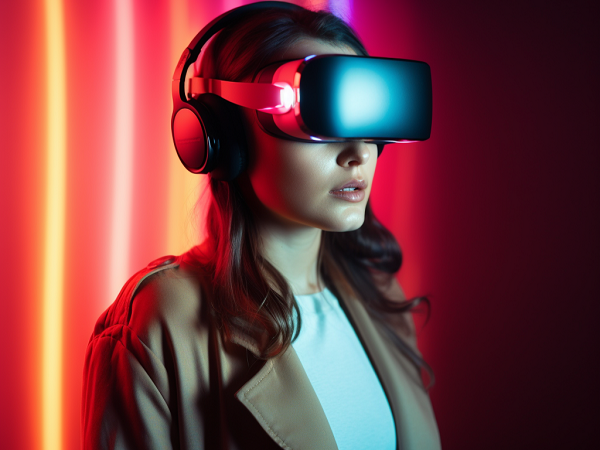Virtual reality (VR) and extended reality (XR) are two immersive technologies that are reshaping our digital interactions. VR immerses users in a fully digital environment, while XR encompasses a broader spectrum, including VR, augmented reality (AR), and mixed reality (MR). This article delves into their distinctions, features, and applications, helping you understand these cutting-edge technologies better.
What Are Mixed Reality (XR), Augmented Reality(AR), and Virtual Reality (VR)?
Mixed Reality (MR), Augmented Reality (AR), and Virtual Reality (VR) represent different points on the spectrum of immersive technologies. Mixed Reality combines real and virtual environments where users can interact with both physical and digital objects. Augmented Reality overlays digital information onto the real world but does not allow for interaction between real and virtual elements. Virtual Reality creates a completely immersive experience where everything the user sees and interacts with is generated by a computer.
How Does Mixed Reality Enhance Real-World Experiences?
Mixed Reality is transformative, offering an environment where virtual objects are integrated seamlessly into the real world. Users wearing MR headsets, such as the Microsoft HoloLens, can see and interact with holographic content overlaid on their physical surroundings. This technology is incredibly valuable in industries like manufacturing, where workers can receive real-time guidance and data without losing sight of their environment.
What Sets Reality and Augmented Apart in Daily Applications?
AR is distinguished by its ability to enhance the real world in real-time without completely replacing it. Applications range from navigation apps that project directions onto the windshield of a car, to retail apps that allow users to visualize furniture in their home before purchasing. Smart glasses and AR apps on smartphones make this technology widely accessible and useful in everyday life.

Exploring the Full Immersion of Virtual Reality
Virtual Reality offers the most immersive experience by transporting users to entirely virtual environments. This is achieved through VR headsets that block out the surrounding physical world. VR’s power lies in its ability to create detailed simulations useful for training scenarios, such as flight simulations for pilots, or immersive experiences for entertainment, such as gaming and virtual tours.
Key Differences Between AR vs VR vs MR
Understanding the key differences between these technologies is crucial for choosing the right tool for the right application. While AR adds to reality, VR replaces it, and MR blends both. Each has its own hardware, with VR requiring headsets that obscure the world, AR using transparent glasses, and MR devices being more complex, capable of depth sensing and more.
Which Industries Benefit Most from Mixed Reality (XR)?
Industries such as automotive, aerospace, and healthcare see significant benefits from MR. For example, MR can assist surgeons with complex operations by providing 3D visualizations of the patient’s anatomy. In aerospace, engineers use MR for visual inspections and maintenance of aircraft, combining real parts with virtual overlays for precision and efficiency.
Augmented Reality in Education and Training: What Are the Advantages?
In education, AR can bring textbooks to life, allowing students to see 3D models of anatomy or historical artifacts by simply pointing their devices at images in their textbooks. For training, AR is used to provide step-by-step procedures to repair complex machinery, directly overlaying the information on the equipment being fixed.
Virtual Reality as a Tool for Remote Collaboration
VR is revolutionizing remote work and collaboration. It allows people from different parts of the world to come together in a virtual space, conduct meetings, design products, or conduct virtual training sessions. This is particularly valuable for global teams, reducing travel costs and improving communication.

How Do AR and VR Influence Modern Healthcare?
Both AR and VR have transformative impacts on healthcare. VR’s immersive environments are used for therapy and pain management, allowing patients to navigate virtual environments that help manage pain and stress. AR, on the other hand, assists surgeons during procedures by providing real-time, overlaid information like ultrasound images or surgical plans.
Future Trends: What’s Next for MR, AR, and VR Technologies?
As technology continues to advance, the boundaries between MR, AR, and VR are expected to blur even further. Future developments may lead to even more seamless integration of digital and physical worlds, greater accessibility, and more personalized and adaptive technologies.
Key Takeaways:
- Mixed Reality: Blends real and virtual for interactive experiences.
- Augmented Reality: Enhances but does not replace the user’s real-world view.
- Virtual Reality: Creates completely virtual environments for total immersion.
- Industry Applications: From healthcare to aerospace, immersive technologies are revolutionizing how we work and learn.
- Future Prospects: Expect more integrated and user-friendly innovations.
My name is Jason, and I'm passionate about the latest technologies, especially VR 🎮, AR 🌐, and XR 🚀. I love exploring how these exciting advancements can be used in different areas of life to make everyday experiences better.


